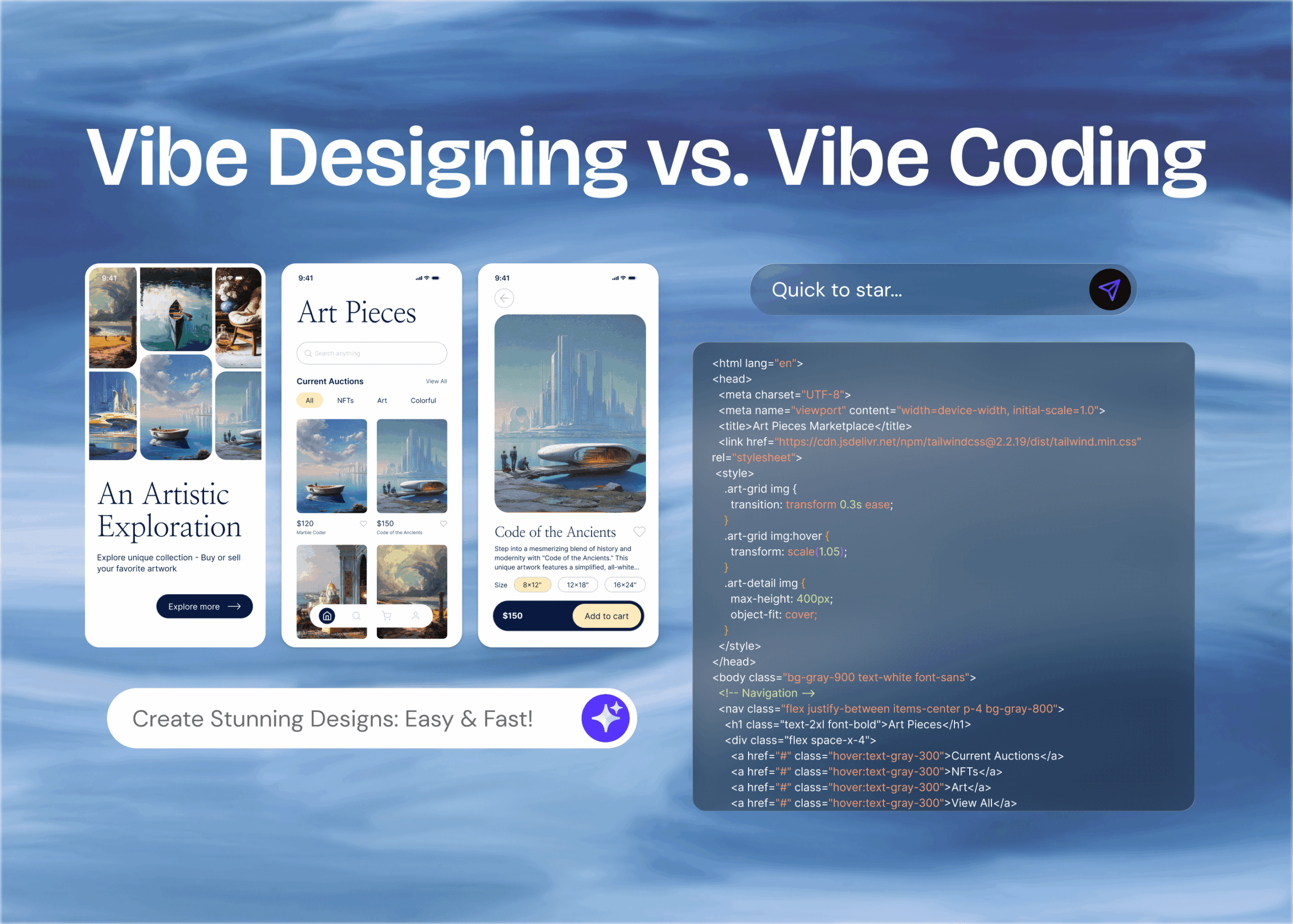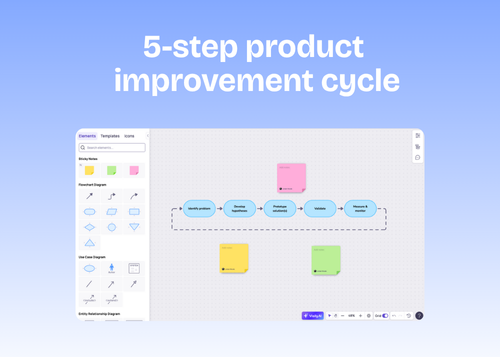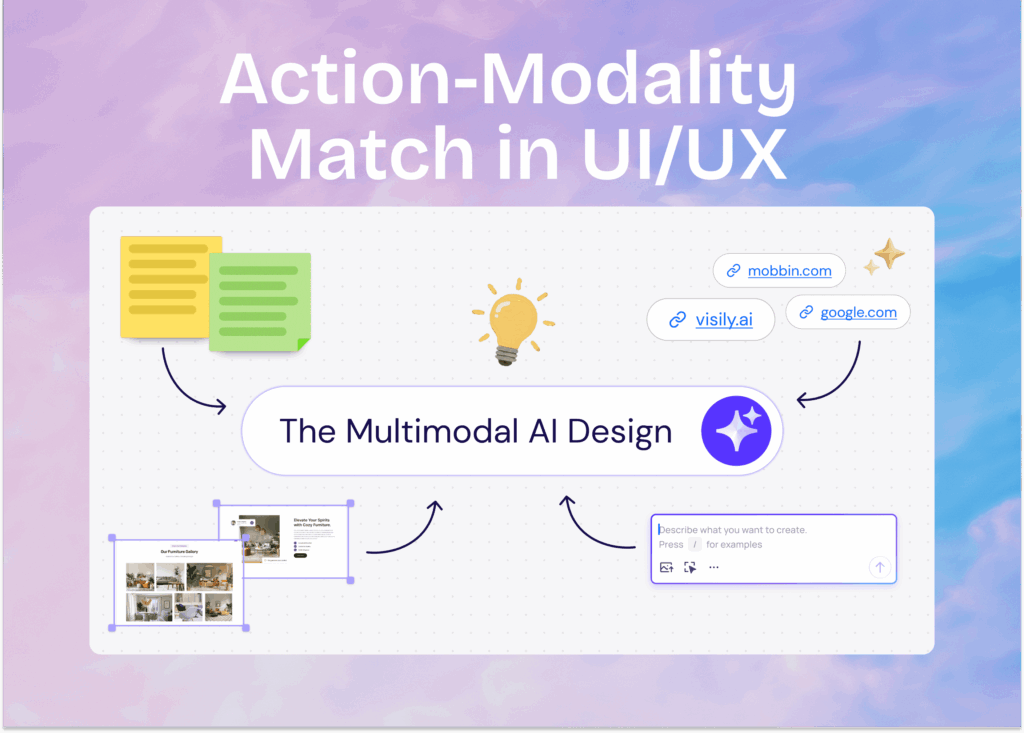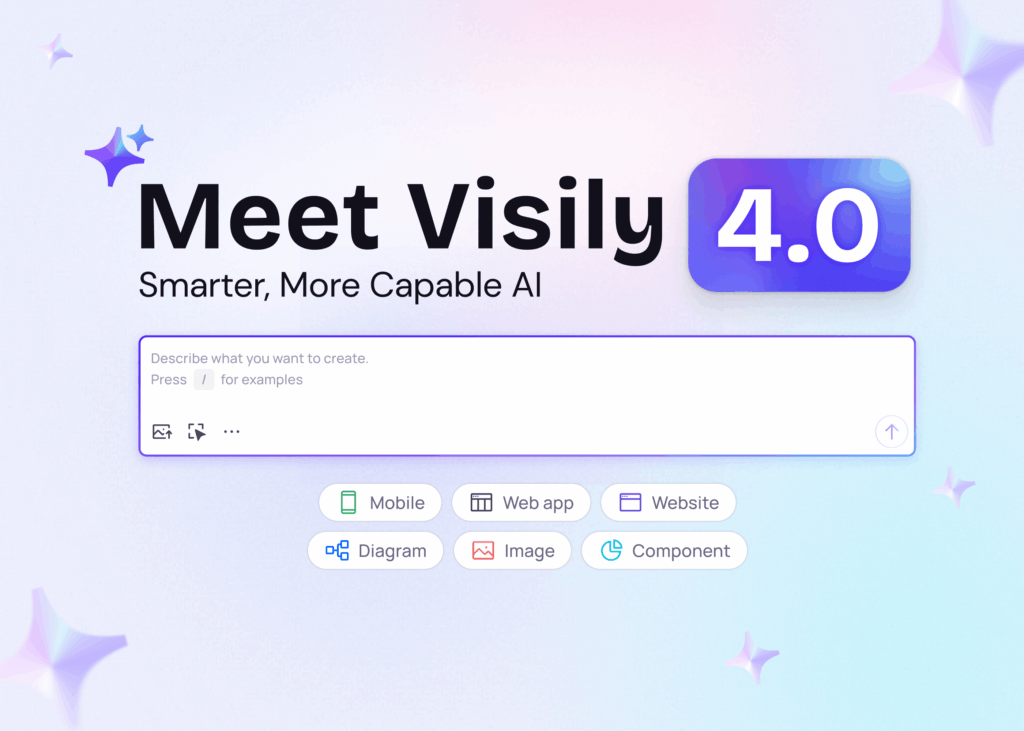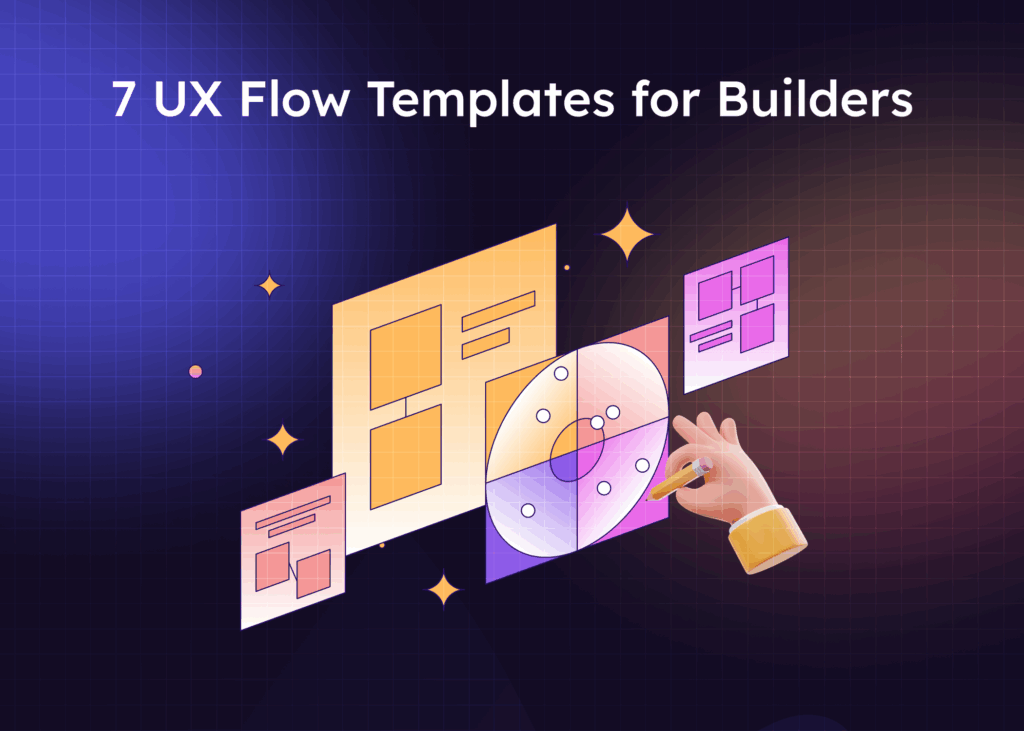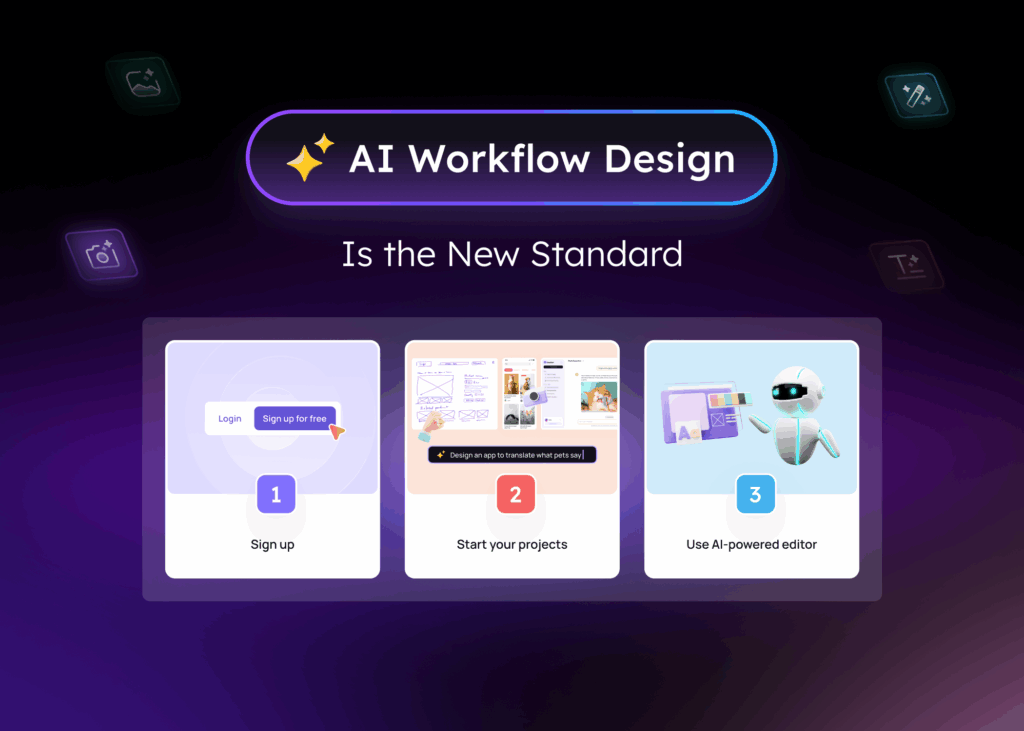Intro & Context
Product teams are building faster than ever. AI has changed the way we design, code, and ship — but not always in obvious ways. Two movements have emerged over the last year:
- Vibe Coding: Using AI to generate a functional app from natural language prompts (instead of writing code)
- Vibe Designing: Using AI to generate wireframes and prototypes from natural language prompts, images, or URLs, along with drag-and-drop editing tools.
At first glance, these trends sound similar: type what you want, get what you want. But they solve different problems, and understanding the difference matters if you want to build the right thing faster.
What Is Vibe Coding?
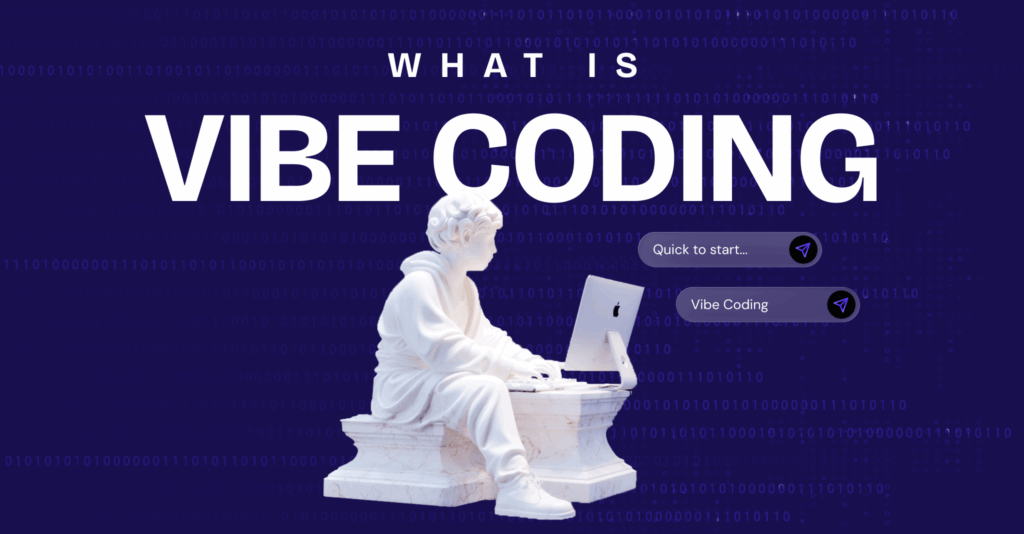
Vibe coding is the natural evolution of pair programming with AI. Instead of manually writing boilerplate, developers articulate what they want in natural language, and an LLM generates working code — front-end, back-end, or both.
“I’m building a project or webapp, but it’s not really coding – I just see stuff, say stuff, run stuff, and copy paste stuff, and it mostly works.” — Andrej Karpathy
In practice, vibe coding looks like this:
- Rapid scaffolding: Generate a new React component or Flask route instantly.
- Small applications: Spin up CRUD apps, internal dashboards, or prototypes without deep engineering effort.
- Tight feedback loop: Run the code, see what breaks, ask the AI to fix it.
The result is democratized programming: product managers, designers, and junior engineers can create working software without knowing every syntax rule (though it’s good to note that some knowledge of code goes a far way when stuck in a vibe coding loop!).
What Is Vibe Designing?
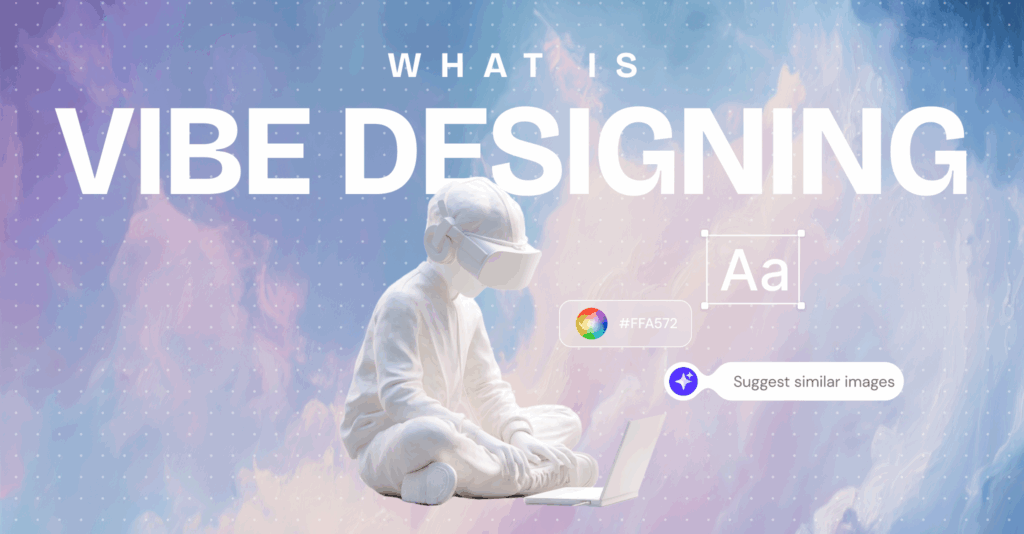
If vibe coding is about shipping code, vibe design is about shaping experience: What’s the general aesthetic we’re after? What screens should be included in this flow? Which elements must be preserved?
Instead of typing “build a payments dashboard” a product manager might attach a screenshot of their existing app and then specify:
“Create a payments dashboard that includes a sidebar menu, bar chart, and filter buttons. Ensure it adheres to the aesthetic of the attached screenshot.”
And instantly see a clickable wireframe they can edit…
Now, to this point, what we’ve described could more or less be done with a vibe coding tool. It’s what happens after the initial design generation where the power of vibe designers is most felt:
Because true vibe designers are canvas-based tools, the editing experience is incredibly flexible. You can complement what AI has created with drag-and-drop elements provided by the tool, or even annotate the design with digital sticky notes or diagram connectors. In other words, it’s completely free-from, and easy for others to collaborate on. In contrast, vibe code tools adhere to more rigidity in the editing experience: most updates must be done via text prompt or code edits.
Key elements of vibe design:
- Multi-modal AI inputs, complemented by easy-to-use design tools: Text, screenshots, and URLs all work as starting points for the AI. Have something specific in mind? Add it directly to the design with basic tools anyone can use (drag-and-drop UI elements, saved templates, etc.)
- Rapid iteration: Generate → edit visually → regenerate sections until it feels right.
- No sidebar prompt-stuffing: Unlike some design AIs that bury controls in side panels, vibe design lets you drag-and-drop to adjust layouts naturally.
Where vibe coding makes code accessible, vibe design makes design accessible — to product managers, engineers, founders, and anyone with a product idea.
Key Differences Between Vibe Designing and Vibe Coding
| Aspect | Vibe Coding | Vibe Design |
| Primary Focus | Generate working code quickly | Generate and refine UI & prototypes |
| Inputs | Natural language prompts | Text, images, URLs (multi-modal) |
| Output | Executable code | Interactive wireframes or prototypes |
| Level of Control | Limited — AI handles architecture decisions | High — visual editing, presets, templates |
| Who Benefits Most | Developers, technical founders | PMs, designers, engineers, non-designers |
| Goal | Ship functioning features | Align stakeholders, test ideas faster |
Think of it this way: vibe coding helps you ship the what, vibe designing helps you explore the why and the how it feels.
Learn more about How is “vibe designing” different from “vibe coding”?
Benefits & Limitations
Strengths of Vibe Coding
- Speed: Generates production-ready code in seconds.
- Learning aid: Great for onboarding junior developers.
- Rapid prototyping: Turn an idea into a working endpoint or component instantly.
Limitations of Vibe Coding
- Security risks: AI-generated code can introduce serious vulnerabilities such as arbitrary code execution or memory corruption if unchecked.
- Less architectural control: Great for quick scaffolds, risky for mission-critical systems without review.
- Debug debt: AI can hallucinate libraries or produce code that “works” but is fragile.
Strengths of Vibe Design
- Democratizes design: Product managers and engineers can visualize ideas without waiting on design teams.
- Emotional resonance: Focuses on how a product feels to users, not just what it does.
- Collaboration built-in: Stakeholders can comment, iterate, and align faster.
Limitations of Vibe Design
- Not pixel-perfect: AI output often needs polish to match brand guidelines or design systems (source).
- Scalability challenges: Large, complex systems still require traditional UX processes to maintain consistency.
Traditional design remains unbeatable for precision and scalability, but it’s slower and more resource-intensive, which is why vibe design is gaining traction as the “first pass” for product teams.
When to Use Each
Vibe Coding:
- Rapid prototypes and proof-of-concepts
- Hackathons or internal tools
- Automating repetitive coding tasks
Traditional Coding:
- Production-grade applications
- Security-sensitive workflows
- Performance-critical features
Vibe Design:
- Early ideation & brainstorming
- Stakeholder alignment before investing in dev work
- User testing of concepts or flows
The Future: Hybrid Workflows

The real win isn’t choosing vibe designing or vibe coding — it’s combining them.
- Start with vibe design: Generate and iterate on wireframes until the team agrees on direction.
- Move to vibe coding: Turn agreed designs into scaffolding code automatically.
- Human oversight: Designers ensure brand quality; engineers review security and performance.
Expect to see integrated platforms emerge that connect the dots: design → code → deploy, all with AI assistance but human governance.
Where Visily Fits In
Choosing between vibe designing and vibe coding isn’t always an either-or decision. Many teams use both: vibe coding to quickly scaffold working software, and vibe designing to shape, iterate, and validate user flows before writing a single line of code.
This is where Visily becomes especially powerful. With its multimodal AI inputs — text, images, URLs, or even rough sketches — Visily helps teams generate editable wireframes in minutes. Once the initial design is ready, stakeholders can collaborate directly inside Visily, refining screens together without context switching.
And when you’re ready to hand off, Visily’s exports and specs ensure engineers get clear, actionable guidance — bridging the gap between high-speed design exploration and production-ready code.
Conclusion
Vibe coding and vibe designing aren’t rivals — they’re teammates. Together, they:
- Reduce friction from idea to prototype to production.
- Empower more team members to contribute to product creation.
- Accelerate innovation without sacrificing quality (when paired with good governance).
The future belongs to hybrid workflows where AI does the heavy lifting and humans focus on vision, safety, and delight.
Ready to see vibe design in action? Try Visily for free and experience how quickly you can turn your next idea into a prototype.
FAQs: Vibe Designing vs. Vibe Coding
1. What’s the difference between vibe coding and vibe designing?
Vibe coding turns natural language prompts into working code — think “AI engineer.”
Vibe design turns ideas into interactive wireframes and prototypes — think “AI designer.”
Together, they cover what you’re building (code) and how it feels to use (design).
2. When should I use vibe coding vs. vibe designing?
Use vibe design early — to explore ideas, align stakeholders, and test flows.
Switch to vibe coding when you’re ready to generate working code or build internal tools fast.
Many teams start with vibe design to de-risk decisions, then move to vibe coding for rapid implementation.
3. Is vibe coding safe for production software?
Not without review.
AI-generated code can introduce vulnerabilities like arbitrary code execution or memory corruption if left unchecked.
For production apps, pair vibe coding with human code review and security testing.
4. Does vibe design replace designers?
No — it augments them.
Vibe design speeds up early exploration and lets PMs, engineers, and founders participate in ideation.
Designers still play a critical role in brand consistency, accessibility, and final polish.
5. Can non-technical people use vibe coding or vibe designing?
Yes, but they serve different needs.
Vibe design is extremely friendly to non-technical users — drag-and-drop editing and AI prompts make it accessible.
Vibe coding is more technical and better suited for those comfortable testing and running code.
6. Why is everyone talking about vibe design right now?
Because speed to market matters more than ever.
Vibe design shortens the cycle from idea → prototype → stakeholder decision to hours instead of weeks.
For PMs and founders, that means faster validation and fewer expensive wrong turns.


